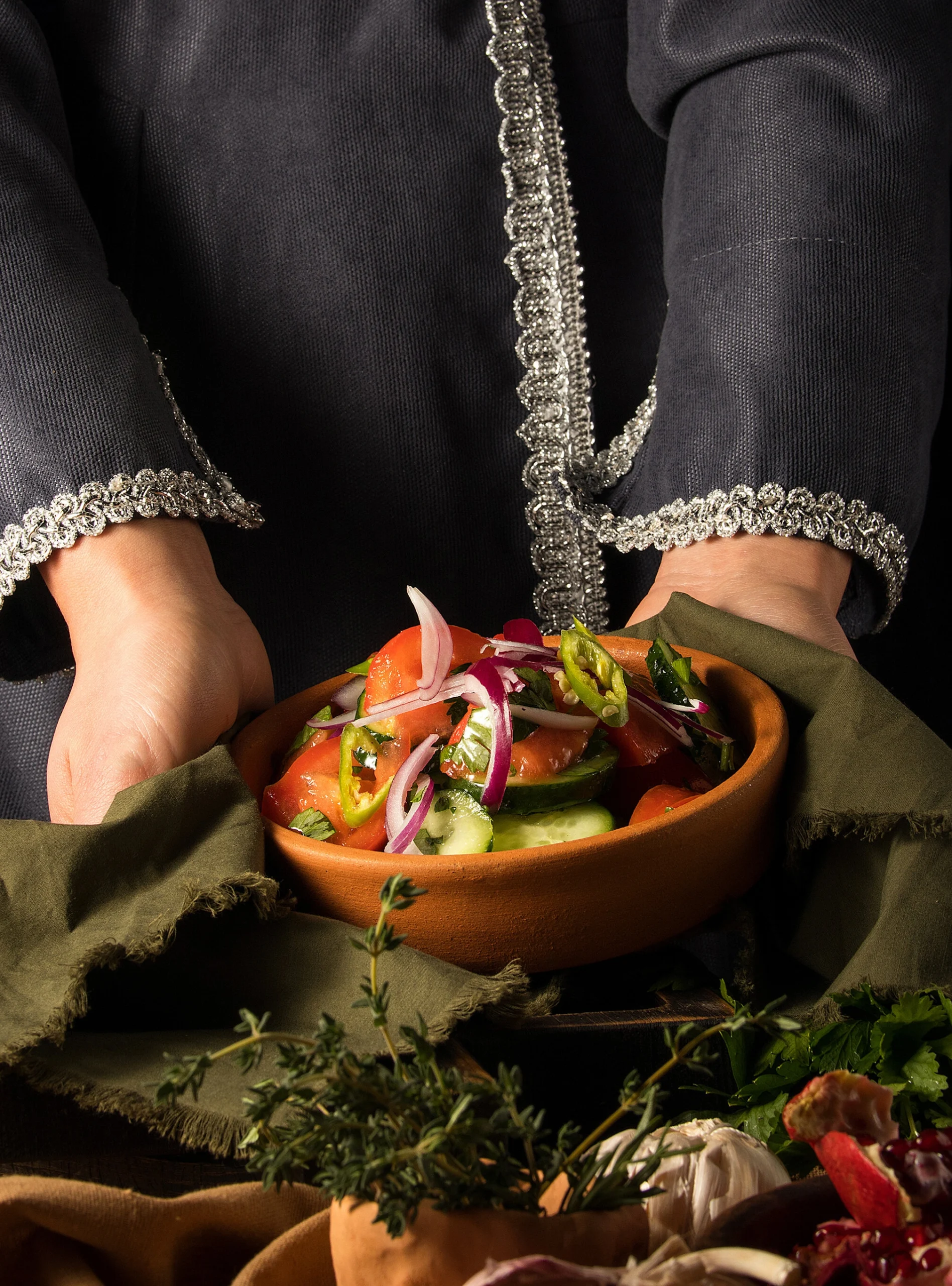Step back in time with recipes from the Byzantine Empire, a fascinating blend of Greek, Roman, and Middle Eastern influences. Byzantine cuisine was known for its intricate flavors, exotic ingredients, and emphasis on balance and harmony in dishes. Whether you’re exploring ancient history or looking to add a historical twist to your meals, these recipes bring the flavors of the medieval Mediterranean to life.
Why These Byzantine Empire Recipes Are a Must-Try
Byzantine recipes are not just about cooking—they are a gateway to understanding the culture, trade, and tastes of one of history’s greatest empires. Featuring ingredients like honey, spices, olive oil, and nuts, these dishes reflect the sophistication of Byzantine society and its access to global trade networks.
For more globally inspired dishes, visit our Dinner Category. Pair these recipes with our Mediterranean Chicken Pita for a complete historical-meets-modern meal.
Ingredients for Recipes from the Byzantine Empire
Byzantine Honey Glazed Lamb
- 2 lbs lamb shoulder or shank
- 2 tbsp olive oil
- 3 tbsp honey
- 2 tbsp red wine vinegar
- 1 tsp cinnamon
- ½ tsp ground cloves
- 1 tsp salt
- ½ tsp black pepper
Lentil and Barley Stew
- 1 cup lentils
- ½ cup barley
- 4 cups vegetable broth
- 1 onion, chopped
- 2 cloves garlic, minced
- 1 tbsp olive oil
- 1 tsp cumin
- 1 tsp coriander
- 1 tbsp fresh parsley, chopped
Byzantine Almond and Honey Cake
- 2 cups almond flour
- ½ cup honey
- 3 eggs
- 1 tsp cinnamon
- ½ tsp ground nutmeg
- 1 tsp orange zest
Step-by-Step Guide to Making Byzantine Recipes
Byzantine Honey Glazed Lamb
- Heat olive oil in a large skillet and sear the lamb on all sides until browned.
- In a bowl, mix honey, red wine vinegar, cinnamon, cloves, salt, and pepper.
- Brush the mixture over the lamb and transfer to a roasting pan.
- Roast at 350°F (175°C) for 1.5–2 hours, basting every 30 minutes, until tender.
- Serve with flatbread or roasted vegetables.
Lentil and Barley Stew
- Heat olive oil in a large pot and sauté onions and garlic until softened.
- Add lentils, barley, and spices, stirring well.
- Pour in vegetable broth and bring to a boil.
- Reduce heat and simmer for 40–50 minutes, or until the lentils and barley are tender.
- Garnish with fresh parsley and serve warm.
Byzantine Almond and Honey Cake
- Preheat the oven to 350°F (175°C) and grease a round baking pan.
- In a mixing bowl, combine almond flour, cinnamon, nutmeg, and orange zest.
- In another bowl, beat eggs and honey until frothy.
- Mix the wet ingredients into the dry ingredients until well combined.
- Pour the batter into the prepared pan and bake for 25–30 minutes, or until a toothpick comes out clean.
For another historical treat, try our Napoleon Cake for a layered dessert experience.
Customizing Your Byzantine Recipes
- Experiment with Proteins: Substitute lamb with chicken or beef for the honey glaze.
- Add More Herbs: Include dill or mint in the lentil stew for extra freshness.
- Make It Vegan: Replace eggs in the almond cake with flaxseed or applesauce.
- Boost the Spice: Use sumac or saffron to enhance the authenticity of these dishes.
For more creative ideas, explore our Snacks Category.
Tips for Perfect Byzantine Recipes
- Use Fresh Spices: Freshly ground spices make a noticeable difference in flavor.
- Cook Slowly: Many Byzantine dishes benefit from slow cooking to meld flavors.
- Balance Sweet and Savory: Byzantine cuisine often paired sweet elements like honey with savory meats or grains.
- Serve Traditionally: Use flatbreads, olives, and dried fruits as accompaniments for an authentic touch.
Pair these dishes with our Chow Chow Recipe for a tangy side dish.
Serving Suggestions for Byzantine Recipes
- Serve honey-glazed lamb with a side of spiced rice or couscous.
- Enjoy lentil and barley stew with crusty bread or pita.
- Top the almond cake with a drizzle of honey or a sprinkle of powdered sugar for an elegant finish.
For dessert, complement your Byzantine-inspired meal with our Almond Flour Chocolate Cake.
Nutrition Facts for Byzantine Recipes
The nutritional content of Byzantine recipes varies greatly depending on the dish. These recipes often feature simple, wholesome ingredients such as grains, legumes, vegetables, meats, and spices. Below is an approximate breakdown per serving for a typical dish:
Per serving (1 cup of stew, bread slice, or similar):
- Calories: 250–450
- Protein: 8–20g
- Carbohydrates: 30–60g
- Sugars: 5–15g
- Dietary Fiber: 5–10g
- Total Fat: 5–15g
- Saturated Fat: 2–5g
- Sodium: 200–600mg
The cuisine of the Byzantine Empire blended Roman, Greek, and Middle Eastern influences, creating rich, flavorful dishes. Byzantine recipes often revolved around fresh, seasonal ingredients and were enhanced with spices and herbs imported via trade routes.
Regional Variations of Byzantine Recipes
The Byzantine Empire spanned vast territories, each contributing unique ingredients and flavors to its cuisine. Here are some examples:
Constantinople-Inspired Lentil Stew
- Key Ingredients: Lentils, garlic, olive oil, onions, and cumin.
- Flavor Profile: Earthy, hearty, and slightly smoky.
- Pairing: Serve with crusty bread or barley flatbread.
Eastern Byzantine Spiced Lamb Stew
- Key Ingredients: Lamb, cinnamon, cloves, dried apricots, and almonds.
- Flavor Profile: Warm, sweet, and aromatic.
- Pairing: Perfect with saffron rice or bulgur wheat.
Aegean Sea Fish with Herbs
- Key Ingredients: Whole fish (sea bass or mullet), olive oil, oregano, and lemon.
- Flavor Profile: Fresh, zesty, and herbal.
- Pairing: Serve with boiled greens or lentil salad.
Anatolian Honey Cake
- Key Ingredients: Honey, wheat flour, almonds, and spices like cinnamon and nutmeg.
- Flavor Profile: Sweet, nutty, and spiced.
- Pairing: Best enjoyed with a cup of herbal tea or spiced wine.
Levantine-Influenced Eggplant Dip
- Key Ingredients: Roasted eggplant, tahini, olive oil, and garlic.
- Flavor Profile: Creamy, smoky, and slightly tangy.
- Pairing: Serve with flatbread or fresh vegetables.
Fun Cooking Techniques for Kids
Introducing Byzantine recipes to kids is a wonderful way to explore history and culture:
Mixing Dough
- Activity: Let kids knead dough for flatbreads or honey cakes.
- Learning Outcome: Teaches them about ancient bread-making techniques.
Assembling Ingredients
- Activity: Encourage kids to arrange lentils, vegetables, and spices in a pot for stews.
- Learning Outcome: Builds an understanding of layering flavors.
Squeezing Citrus
- Activity: Allow kids to juice lemons for fish dishes or marinades.
- Learning Outcome: Develops motor skills and introduces them to fresh flavors.
Decorating with Herbs and Nuts
- Activity: Let kids garnish dishes with parsley, mint, or almonds.
- Learning Outcome: Sparks creativity and attention to detail.
Storytelling While Cooking
- Activity: Share stories of Byzantine history as they cook.
- Learning Outcome: Engages their imagination and connects them to the cultural roots of the dish.
Kitchen Tools to Elevate Byzantine Recipes
- Clay Pots or Dutch Ovens
- Replicates traditional cooking methods for stews and braises.
- Mortar and Pestle
- Ideal for grinding spices and herbs, as was common in Byzantine kitchens.
- Wooden Spoons
- Traditional tools for stirring and mixing ingredients.
- Griddle or Flat Pan
- Perfect for making flatbreads or honey cakes.
- Sharp Knife
- Ensures precise cutting of vegetables, herbs, and meats.
- Citrus Juicer
- Simplifies juicing lemons or oranges for marinades and dressings.
- Cheesecloth
- Useful for straining yogurts or sauces, a technique common in Byzantine cooking.
Common Mistakes to Avoid
- Overcomplicating Recipes
- Byzantine cuisine is rooted in simplicity, so avoid using too many modern ingredients.
- Underseasoning
- Use plenty of spices and herbs to achieve the bold flavors typical of the era.
- Overcooking Fish or Vegetables
- Cook these gently to preserve their fresh textures and flavors.
- Ignoring Seasonal Ingredients
- Focus on fresh, local produce to stay true to Byzantine culinary traditions.
- Skipping Honey or Vinegar Balances
- Incorporate sweet and sour elements for authentic flavor profiles.
Creative Add-Ins
- Dried Fruits
- Include figs, raisins, or apricots for a touch of natural sweetness.
- Nuts
- Add almonds, pine nuts, or walnuts for texture and richness.
- Fresh Herbs
- Incorporate dill, parsley, or mint for aromatic layers.
- Cheese
- Add crumbled feta or a dollop of strained yogurt for creaminess.
- Exotic Spices
- Use cinnamon, nutmeg, or cardamom for a historical flair.
How to Double or Scale Byzantine Recipes
- Use Larger Pots or Pans
- Ensure enough room for doubling stew or bread recipes.
- Prepare in Batches
- Make large quantities of sauces or dips and store for later use.
- Serve Family-Style
- Present dishes on large platters, encouraging communal dining.
- Customizable Options
- Provide multiple toppings and sides for guests to mix and match.
How to Store Byzantine Recipes
- Refrigeration
- Store stews, dips, and bread in airtight containers in the fridge for up to 4 days.
- Freezing
- Freeze soups and braises for up to 3 months, thawing overnight before reheating.
- Reheating
- Warm dishes gently on the stovetop or in the oven to maintain their texture and flavor.
- Meal Prep
- Divide into portions for easy lunches or dinners throughout the week.
Byzantine Recipes in Culture
Byzantine cuisine was deeply intertwined with the empire’s culture, reflecting its position at the crossroads of Europe and Asia. The use of spices, olive oil, and preserved ingredients showcased the influence of trade and the empire’s vast territory.
Feasting played a significant role in Byzantine society, with elaborate meals symbolizing wealth, hospitality, and religious observance. Today, Byzantine recipes inspire modern Mediterranean and Middle Eastern dishes, preserving the culinary legacy of a remarkable era.
How to Adapt Byzantine Recipes for Special Diets
- Gluten-Free
- Use gluten-free flours for breads or desserts.
- Vegan-Friendly
- Replace meat with chickpeas or lentils in stews.
- Low-Sodium Option
- Limit added salt and use fresh herbs for flavor.
- Low-Carb Option
- Substitute grains with cauliflower rice or zucchini noodles.
- Dairy-Free
- Omit cheese or yogurt garnishes, replacing them with tahini or nut-based alternatives.
How to Adapt Recipes from the Byzantine Empire for Special Occasions
- Elegant Dinners
- Serve spiced lamb stew in decorative bowls with fresh garnishes.
- Casual Gatherings
- Create a spread of dips, breads, and roasted vegetables for guests to share.
- Festive Holidays
- Incorporate dried fruits, nuts, and aromatic spices for a festive touch.
- Kids’ Parties
- Offer simple flatbreads with honey or cheese for a kid-friendly option.
- Fitness Meals
- Pair lentil or chickpea-based dishes with fresh greens for a balanced, high-protein meal.
FAQs About Recipes from the Byzantine Empire
What defines Byzantine cuisine?
Byzantine cuisine is a fusion of Greek, Roman, and Middle Eastern influences, characterized by the use of spices, honey, nuts, and olive oil.
Can I use modern substitutes for ancient ingredients?
Yes, ingredients like quinoa or modern cuts of meat can be used while maintaining the spirit of the original recipes.
How do I store these dishes?
Store leftovers in airtight containers in the refrigerator for up to 3 days. Reheat gently to preserve flavors.
Are these recipes difficult to make?
Not at all! These recipes are simple and rely on fresh, high-quality ingredients for their depth of flavor.
Explore More Recipes Like Byzantine Recipes
If you enjoyed these historical recipes, try our Mediterranean Chicken Pita for another Middle Eastern-inspired dish, or explore our Baking Category for timeless baking ideas.
These Recipes from the Byzantine Empire offer a taste of history and culture, blending ancient techniques with modern cooking methods. Whether you’re preparing a feast for a history-themed dinner or simply exploring new flavors, these dishes are a delicious way to connect with the past. Grab your ingredients and enjoy a culinary journey through time!

